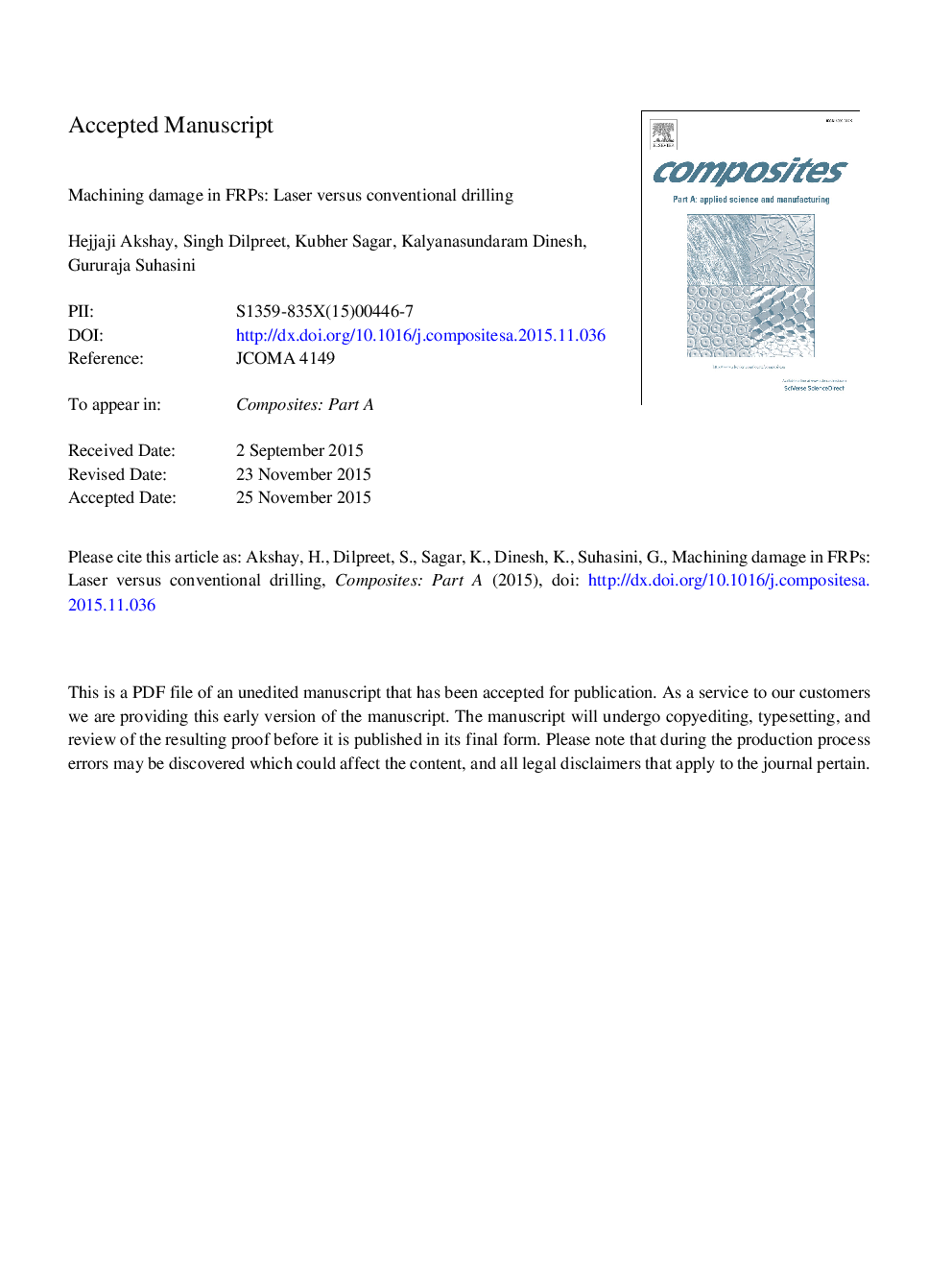| Article ID | Journal | Published Year | Pages | File Type |
|---|---|---|---|---|
| 7891185 | Composites Part A: Applied Science and Manufacturing | 2016 | 35 Pages |
Abstract
Comparison of the performance of conventional drilling (CD) and fiber laser machining (FLM) of unidirectional (UD) and multidirectional (MD) glass (G) and carbon (C) fiber reinforced plastics (FRPs) has been presented with an emphasis on machining damage characterization. FLM induced damages are heat affected zone (HAZ), matrix recession, kerf width, and tapered cut whereas CD induced damage include fiber pull-outs, fuzzing, spalling, matrix cracking and delamination. Scanning Acoustic Microscopy (SAM) proved a useful technique to quantify machining damage by providing a ply-by-ply damage analysis. In addition, Scanning Electron Microscopy (SEM) provided detailed views of inherent damage mechanisms during FLM and CD. Machining damage investigation reveals a strong dependence on anisotropy of the composite laminate with greatest matrix recession occurring for UD-CFRP laminates. FLM was found to be efficient with decreased machining times and less set-up requirements. However, surface characteristics of CD specimens were found to be superior to FLM specimens.
Keywords
Related Topics
Physical Sciences and Engineering
Materials Science
Ceramics and Composites
Authors
Akshay Hejjaji, Dilpreet Singh, Sagar Kubher, Dinesh Kalyanasundaram, Suhasini Gururaja,
